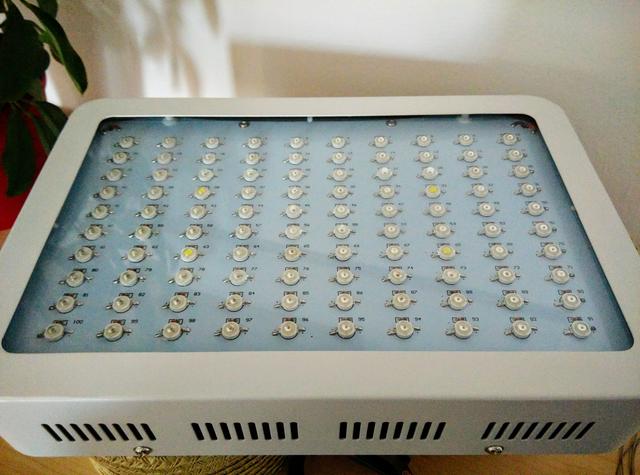How much was shipping,taxes etc.?
Also plants don't like over 7000K.
500nm is debatable,as is 580nm.
[SIZE=11pt]380 - 400 nm Start of visible light spectrum. Process of chlorophyll absorption begins. UV protected plastics ideally block out any light below this range.[/SIZE]
[SIZE=11pt]400 - 520 nm This range includes violet, blue, and green bands. Peak absorption by chlorophyll occurs, and a strong influence on photosynthesis. (promotes vegetative growth)[/SIZE]
[SIZE=11pt]520 - 610 nm This range includes the green, yellow, and orange bands and has less absorption by pigments.[/SIZE]
[SIZE=11pt]610 - 720 nm This is the red band. Large amount of absorption by chlorophyll occurs, and most significant influence on photosynthesis. (promotes flowering and budding) The ratio of red (660nm) to far red (730nm) in sunlight is about 1.2:1[/SIZE]
[SIZE=11pt]720 - 1000 nm There is little absorption by Chlorophyll here, but Phytochrome uses a nice portion. Flowering and germination is influenced. Near and above the higher end of the band is the Infrared spectrum, which can also be heat and could cause elongation or affect water absorption/transpiration.[/SIZE]
[SIZE=11pt]Many of these plant pigments have dual wavelength peaks that can be activated with led light combinations:The visible colors of light from shortest to longest wavelength are: violet, blue, green, yellow, orange, and red. Ultraviolet radiation has a shorter wavelength than the visible violet light. Infrared radiation has a longer wavelength than visible red light. White light is[/SIZE]
[SIZE=11pt]Beta-carotene 450nm 480-485nm dual peak[/SIZE]
[SIZE=11pt]chlorophyll a 430nm 662nm dual peak[/SIZE]
[SIZE=11pt]chlorophyll b 453nm 642nm dual peak[/SIZE]
[SIZE=11pt]phycoerythrin 590nm single peak[/SIZE]
[SIZE=11pt]phycocyanin 625nm single peak[/SIZE]
[SIZE=11pt]a mixture of the colors of the visible spectrum. Here is a summary of wavelengths (nm). If you are building your own LED Grow Lights it may be of help when selecting LEDs for your project.[/SIZE]
[SIZE=11pt]200 - 280 nm UVC ultraviolet range which is generally harmful to plants. LEDs in this spectrum are non-existant or very expensive.[/SIZE]
[SIZE=11pt]280 - 315 nm Includes harmful UVB ultraviolet light which causes plants colors to fade. UV LEDs in this range are now available and coming down in price.[/SIZE]
[SIZE=11pt]315 - 380 nm Range of UVA ultraviolet light which is neither harmful nor beneficial to most plants.[/SIZE]
[SIZE=11pt]This is from a Pot growing site,Peppers aren't light specific.[/SIZE]
[SIZE=11pt]Don't care about red or blue light in general.[/SIZE]
[SIZE=11pt]They just like any plant use wave lengths in enough LM to make them happy.[/SIZE]
[SIZE=11pt]Best lights I've used were T10 Flouros in 6500K,then LEDs I made in 400nm to 650nm.[/SIZE]
[SIZE=11pt]For me LM rule in the right NM.[/SIZE]
[SIZE=11pt]I use a Lux meter to mesure my lighting.[/SIZE]
[SIZE=11pt]35,000 Lux is average for noon day Sun.[/SIZE]
[SIZE=11pt]My shelves average 37,000 lux.[/SIZE]
[SIZE=11pt]I'd loose the white in 14.000 K.[/SIZE]
Smoke


